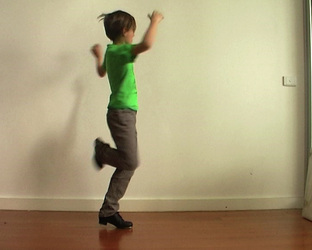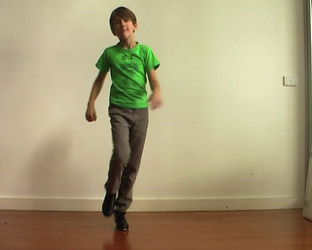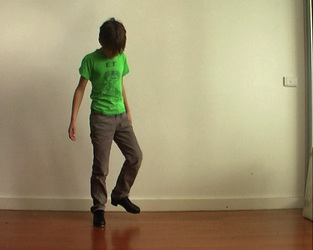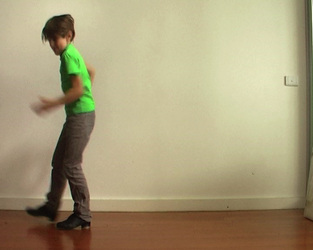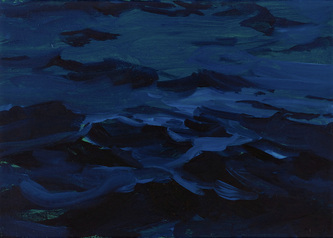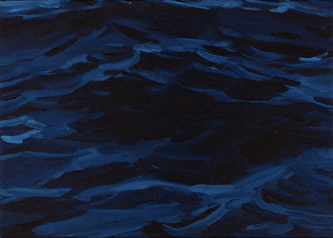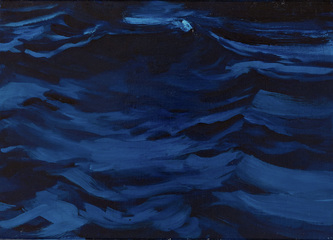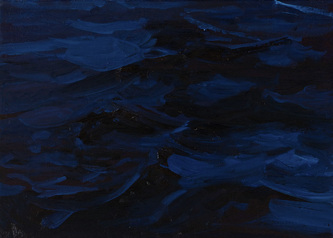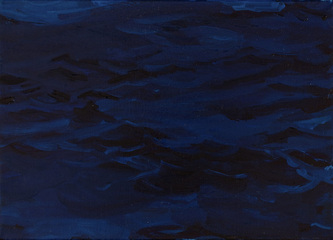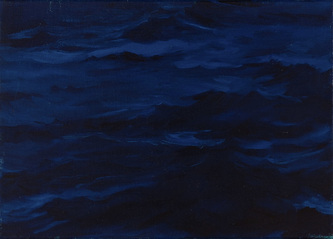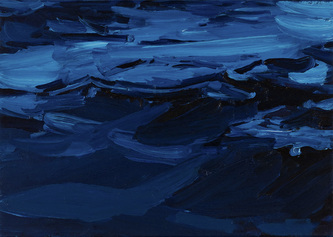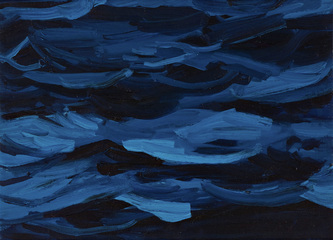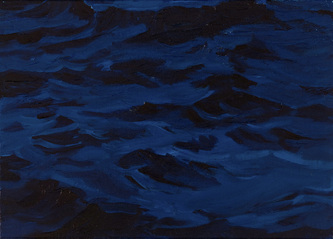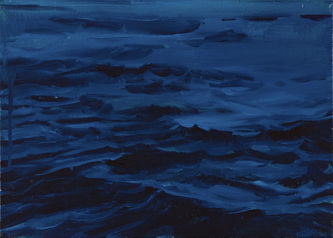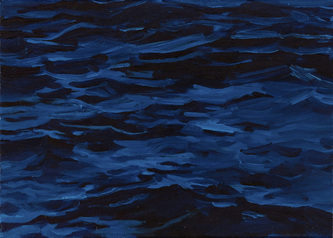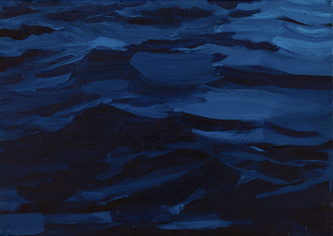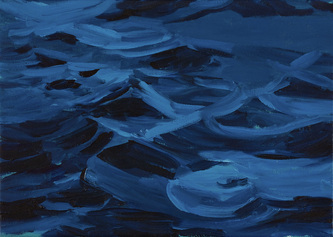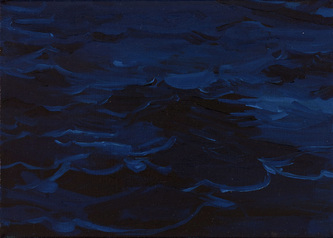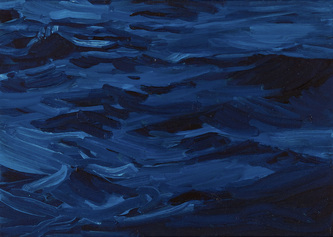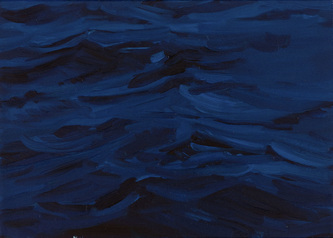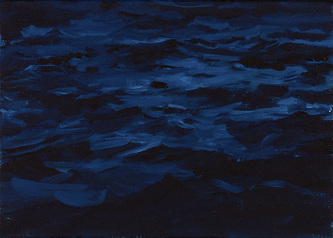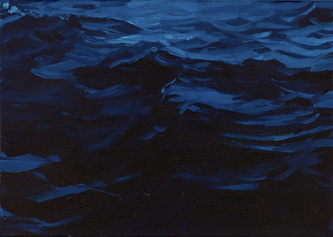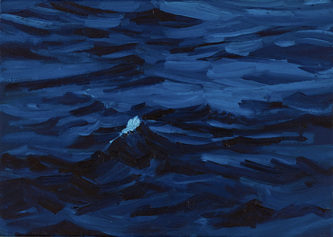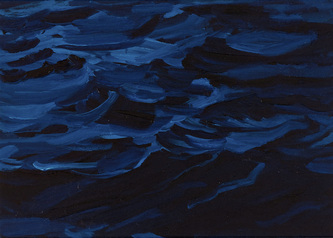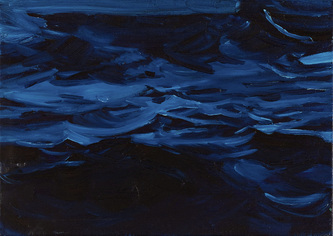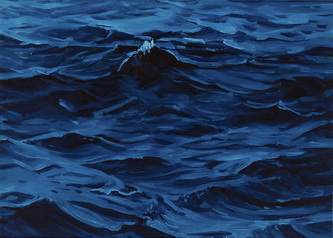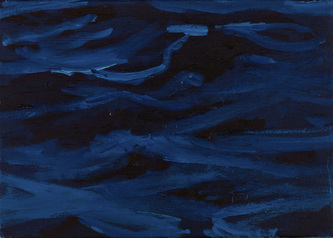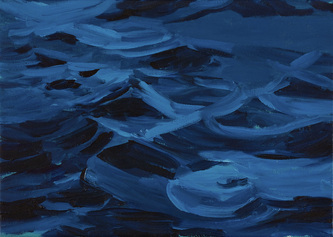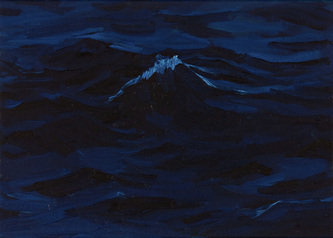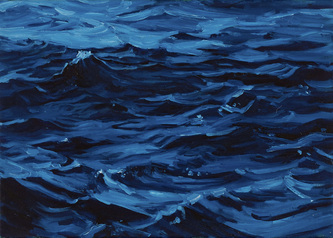2010
Dancing Without Lessons
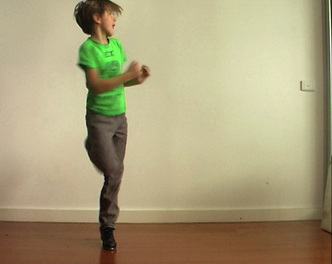
Caught up in the moment of creation the boy improvises a routine that can never be repeated.
In Dancing Without Lessons ideas of belief and order are questioned as we watch a 7 year old boy dance. His ideas of what dancing is have been pieced together through encounter, observation and internal logic. You-tube clips, a busker in the city and a neighbour practicing in the car park have sparked his desire to dance. Dancing Without Lessons captures the space or territory that exists in-between two states of being; in-between innocence and knowledge. Transitional moments that comprise a shift in consciousness are rarely recorded. Rather they go unnoticed, or they become obscured by a fresh and new understanding. In Dancing Without Lessons we are reminded of a different understanding of the world, one in which owning a pair of tap shoes is all it takes to make you a dancer.
Life teaches us that there is a correct way of doing things. We all understand the rules of acquiring knowledge. One must have lessons. The boy in the video will learn to dance, he will have lessons. This precise moment will not last. Another sort of order will replace his understanding of what it is to dance, but what it if he's right, what if thinking you can do something could be enough?
In Dancing Without Lessons ideas of belief and order are questioned as we watch a 7 year old boy dance. His ideas of what dancing is have been pieced together through encounter, observation and internal logic. You-tube clips, a busker in the city and a neighbour practicing in the car park have sparked his desire to dance. Dancing Without Lessons captures the space or territory that exists in-between two states of being; in-between innocence and knowledge. Transitional moments that comprise a shift in consciousness are rarely recorded. Rather they go unnoticed, or they become obscured by a fresh and new understanding. In Dancing Without Lessons we are reminded of a different understanding of the world, one in which owning a pair of tap shoes is all it takes to make you a dancer.
Life teaches us that there is a correct way of doing things. We all understand the rules of acquiring knowledge. One must have lessons. The boy in the video will learn to dance, he will have lessons. This precise moment will not last. Another sort of order will replace his understanding of what it is to dance, but what it if he's right, what if thinking you can do something could be enough?
____________________________
2008
The Uncertain Nature of Water
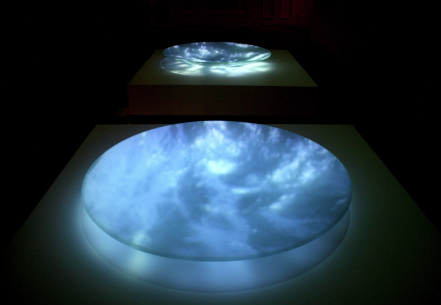
The Uncertain Nature of Water was made with the assistance of the Rupert Bunny Foundation when I became the inaugural Fellowship winner in 2006. Super8 films of Port Phillip bay water are projected onto large cupped glass dishes from above creating a simulated ocean inside the gallery space.
This project aimed to question our relationship to nature and to the museum. Given that 'nature' is largely constructed to conform to cultural ideals, a constantly surging dish of fictional ocean water could feasibly be a reasonable substitute for authenticity.
Working with the familiar metaphor of water as time, the viewer watches looped footage of the surging ocean. Waves form and reform as the viewer watches an exact moment repeat itself. While nostalgia offers comfort it ultimately denies growth, therefore one must force oneself away, one must break the reverie and go outside back into the daylight. The escape offered by the ocean is therefore revealed to be illusionary.
This project aimed to question our relationship to nature and to the museum. Given that 'nature' is largely constructed to conform to cultural ideals, a constantly surging dish of fictional ocean water could feasibly be a reasonable substitute for authenticity.
Working with the familiar metaphor of water as time, the viewer watches looped footage of the surging ocean. Waves form and reform as the viewer watches an exact moment repeat itself. While nostalgia offers comfort it ultimately denies growth, therefore one must force oneself away, one must break the reverie and go outside back into the daylight. The escape offered by the ocean is therefore revealed to be illusionary.
____________________________
2007
Drift
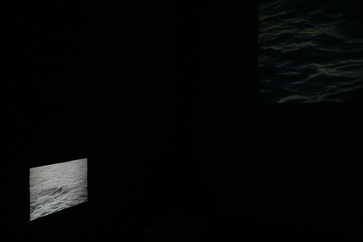
Drift began as an investigation into the nature of illusion, as an essential element in painting, and as a device in film making. However it soon emerged that drift should function as a methodology for art making, as by definition it implies a purposeful placing of oneself outside the boundaries of control and predetermination. Through filming the ocean repeatedly and making a series of over 40 paintings of the horizonless sea, Drift, became an installation in which the viewer was simultaneously immersed and distanced from.
“Water is our element; we imagine entering back into it, coming home to it, immersing ourselves totally as we immerse ourselves in knowledge” says Susan Stewart in her essay "What thought is like" (The Open Studio, University of Chicago Press, p103). Immersion in this sense is a kind of ecstacy. For as long as one is immersed, submerged, or overcome, one is not aware of self. As we gaze into water we gaze at death, or the absence of a presence. We gaze into an idea, for as every child knows water will not stay long in even the most tightly cupped hands.
In Drift a lone swimmer is caught in the act of swimming. He moves neither forward nor backward, he just slowly swims. He becomes swimming. We are uncertain as to whether this is an act of pleasure or survival, but it doesn't matter, both are irrelevant concepts: he is in something, deep in the struggle of the human condition.
“Water is our element; we imagine entering back into it, coming home to it, immersing ourselves totally as we immerse ourselves in knowledge” says Susan Stewart in her essay "What thought is like" (The Open Studio, University of Chicago Press, p103). Immersion in this sense is a kind of ecstacy. For as long as one is immersed, submerged, or overcome, one is not aware of self. As we gaze into water we gaze at death, or the absence of a presence. We gaze into an idea, for as every child knows water will not stay long in even the most tightly cupped hands.
In Drift a lone swimmer is caught in the act of swimming. He moves neither forward nor backward, he just slowly swims. He becomes swimming. We are uncertain as to whether this is an act of pleasure or survival, but it doesn't matter, both are irrelevant concepts: he is in something, deep in the struggle of the human condition.
